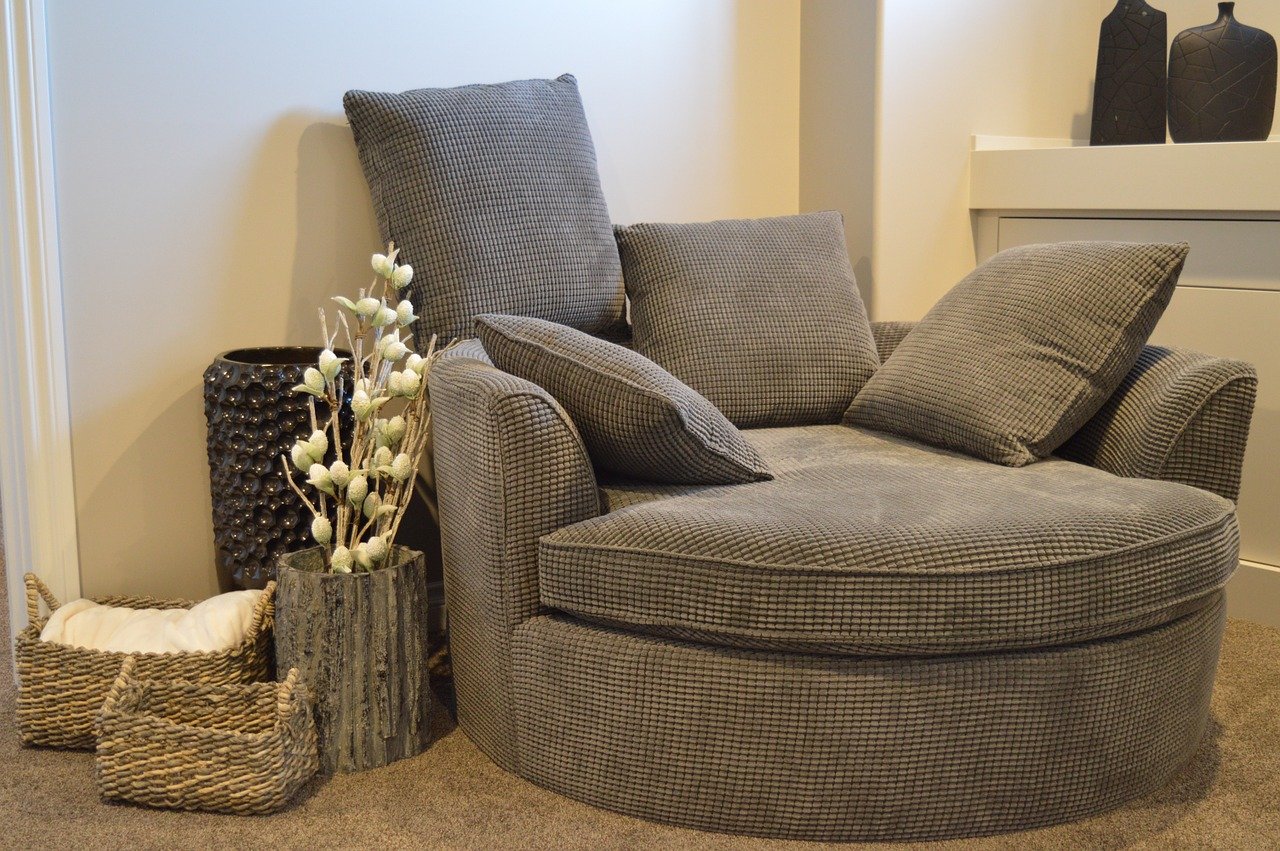When you’re looking for a loveseat, you want it to fit your space and your lifestyle. After all, a loveseat is more than just a piece of furniture. Unlike traditional couches, loveseats incorporate more of the features of statement pieces; that is, they are more than simply functional. Specifically, selecting a loveseat involves considering how your loveseat fits your physical space, the demands of your lifestyle, your aesthetic design preferences, and even your budget. Keeping these elements in mind, you’ll quickly find the ideal loveseat for you and your family.
First, as with any piece of furniture, it’s crucial to measure your space. Ideally, your furniture should occupy less than a third of your living room floor space. When you’re considering a loveseat, it’s important to think about how it will physically fit into your space. Ask yourself, for instance, whether you will need to remove another furniture element to open up the space and prevent your loveseat from making the room feel cramped or overcrowded. The arrangement of your furniture plays a significant role here. Consider rearranging your existing furnishings to identify the ideal placement that will allow your new loveseat to shine. That said, beware of the light. Smaller pieces of furniture like loveseats are more susceptible to damage from extended exposure to direct sunlight. Think about how the materials you choose will handle natural light, particularly if you plan to place your loveseat beneath a window. Similarly, consider the placement of vents and outlets when planning your new furniture arrangement.
Next, and just as important, is to match the function of your loveseat to your lifestyle. Think about how your loveseat will be utilized. For example, families with toddlers and pets might consider more durable materials, like tight-knit fabrics or leather, which are more resistant to tears and stains. In smaller rooms where the loveseat will serve as the primary seating, comfort is equally important. Not all loveseats are created equal, after all. Weigh your intended use of your loveseat against its features. Consider whether a reclining feature would increase your enjoyment, for instance. Remember, however, to confirm that you have the space to accommodate any additional features.
Style matters, too. A loveseat that clashes with the design of your living area won’t only look out of place, but it may even disrupt the cohesion of the entire room. Think about more than just the overall style. While maintaining a consistent style throughout the room matters (consider, for instance, how odd a sleek, Scandinavian loveseat would look beside a bulky, traditional recliner), even more, important is that the loveseat complements the room. This can involve colors that work well together or even complementary textures. Online retailers offer a massive selection of https://www.1stopbedrooms.com/living/living-room-furniture/loveseats colorful loveseats to choose from. For instance, a leather loveseat might pair well with a faux fur area rug. Often, you’ll be able to pull elements together with accessories, too. That said, it’s much easier, to begin with a loveseat that enhances your space, rather than trying to force a fit after the fact.
Finally, your loveseat should fit your budget. Fortunately, loveseat options range from high-end designer to everyday budget-friendly. Your design preferences shouldn’t be impeded by cost concerns, especially when you are able to narrow down your search according to these specifications. Within each price range, however, you’ll see some variation in available features. For instance, leather loveseats tend to reflect the added benefits in their price. When deciding your own price range, keep in mind that a quality piece of furniture is well worth the investment. With proper care, a loveseat can last for generations, and often do, since they combine utility with style. A loveseat is also much easier to move than bulkier traditional sofas and sectionals, and this flexibility is well worth the price.
Each of these elements contributes to finding the ideal loveseat for your family. If you take the extra time and effort to consider exactly how each feature will fit into your lifestyle, you’re far more likely to end up with a loveseat that you not only love but which that lasts. Ideally, your loveseat will become a staple element in your home as more than just part of your interior design. Your loveseat should provide comfort and, over time, become a focal point of your living area and, by extension, your entire home. You’re sure to accumulate plenty of family memories tied to your carefully chosen loveseat.



 Bitcoin
Bitcoin  Ethereum
Ethereum  Tether
Tether  XRP
XRP  Solana
Solana  USDC
USDC  TRON
TRON  Cardano
Cardano  Lido Staked Ether
Lido Staked Ether  Avalanche
Avalanche  Toncoin
Toncoin